Yunhao Chen
Extracting Training Data from Unconditional Diffusion Models
Jun 18, 2024Abstract:As diffusion probabilistic models (DPMs) are being employed as mainstream models for generative artificial intelligence (AI), the study of their memorization of the raw training data has attracted growing attention. Existing works in this direction aim to establish an understanding of whether or to what extent DPMs learn by memorization. Such an understanding is crucial for identifying potential risks of data leakage and copyright infringement in diffusion models and, more importantly, for more controllable generation and trustworthy application of Artificial Intelligence Generated Content (AIGC). While previous works have made important observations of when DPMs are prone to memorization, these findings are mostly empirical, and the developed data extraction methods only work for conditional diffusion models. In this work, we aim to establish a theoretical understanding of memorization in DPMs with 1) a memorization metric for theoretical analysis, 2) an analysis of conditional memorization with informative and random labels, and 3) two better evaluation metrics for measuring memorization. Based on the theoretical analysis, we further propose a novel data extraction method called \textbf{Surrogate condItional Data Extraction (SIDE)} that leverages a classifier trained on generated data as a surrogate condition to extract training data directly from unconditional diffusion models. Our empirical results demonstrate that SIDE can extract training data from diffusion models where previous methods fail, and it is on average over 50\% more effective across different scales of the CelebA dataset.
A Unified Framework for Generative Data Augmentation: A Comprehensive Survey
Sep 30, 2023Abstract:Generative data augmentation (GDA) has emerged as a promising technique to alleviate data scarcity in machine learning applications. This thesis presents a comprehensive survey and unified framework of the GDA landscape. We first provide an overview of GDA, discussing its motivation, taxonomy, and key distinctions from synthetic data generation. We then systematically analyze the critical aspects of GDA - selection of generative models, techniques to utilize them, data selection methodologies, validation approaches, and diverse applications. Our proposed unified framework categorizes the extensive GDA literature, revealing gaps such as the lack of universal benchmarks. The thesis summarises promising research directions, including , effective data selection, theoretical development for large-scale models' application in GDA and establishing a benchmark for GDA. By laying a structured foundation, this thesis aims to nurture more cohesive development and accelerate progress in the vital arena of generative data augmentation.
Adaptive Growth: Real-time CNN Layer Expansion
Sep 06, 2023Abstract:Deep Neural Networks (DNNs) have shown unparalleled achievements in numerous applications, reflecting their proficiency in managing vast data sets. Yet, their static structure limits their adaptability in ever-changing environments. This research presents a new algorithm that allows the convolutional layer of a Convolutional Neural Network (CNN) to dynamically evolve based on data input, while still being seamlessly integrated into existing DNNs. Instead of a rigid architecture, our approach iteratively introduces kernels to the convolutional layer, gauging its real-time response to varying data. This process is refined by evaluating the layer's capacity to discern image features, guiding its growth. Remarkably, our unsupervised method has outstripped its supervised counterparts across diverse datasets like MNIST, Fashion-MNIST, CIFAR-10, and CIFAR-100. It also showcases enhanced adaptability in transfer learning scenarios. By introducing a data-driven model scalability strategy, we are filling a void in deep learning, leading to more flexible and efficient DNNs suited for dynamic settings. Code:(https://github.com/YunjieZhu/Extensible-Convolutional-Layer-git-version).
Data Augmentation for Environmental Sound Classification Using Diffusion Probabilistic Model with Top-k Selection Discriminator
Apr 04, 2023


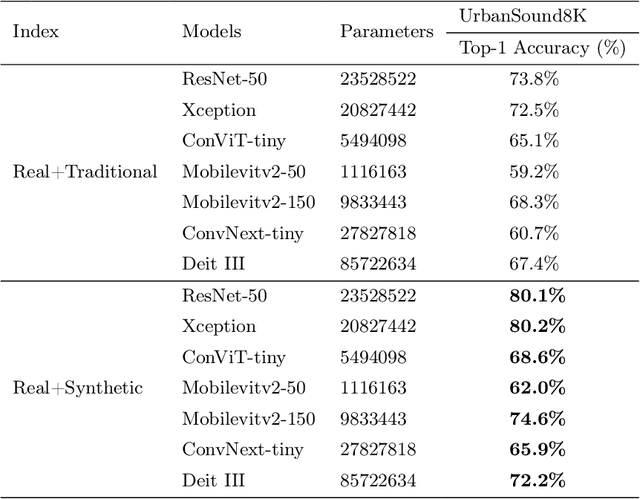
Abstract:Despite consistent advancement in powerful deep learning techniques in recent years, large amounts of training data are still necessary for the models to avoid overfitting. Synthetic datasets using generative adversarial networks (GAN) have recently been generated to overcome this problem. Nevertheless, despite advancements, GAN-based methods are usually hard to train or fail to generate high-quality data samples. In this paper, we propose an environmental sound classification augmentation technique based on the diffusion probabilistic model with DPM-Solver$++$ for fast sampling. In addition, to ensure the quality of the generated spectrograms, we train a top-k selection discriminator on the dataset. According to the experiment results, the synthesized spectrograms have similar features to the original dataset and can significantly increase the classification accuracy of different state-of-the-art models compared with traditional data augmentation techniques. The public code is available on https://github.com/JNAIC/DPMs-for-Audio-Data-Augmentation.
Effective Audio Classification Network Based on Paired Inverse Pyramid Structure and Dense MLP Block
Nov 05, 2022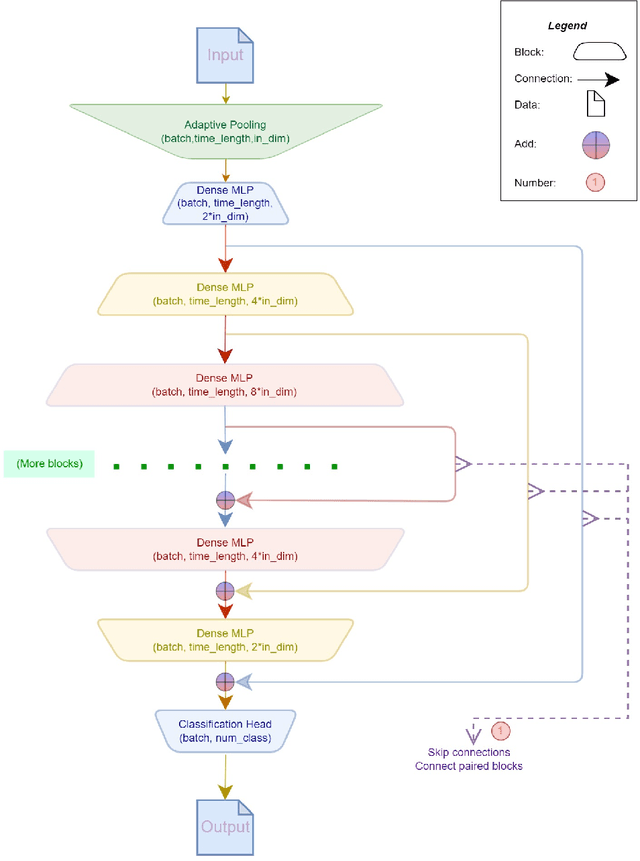
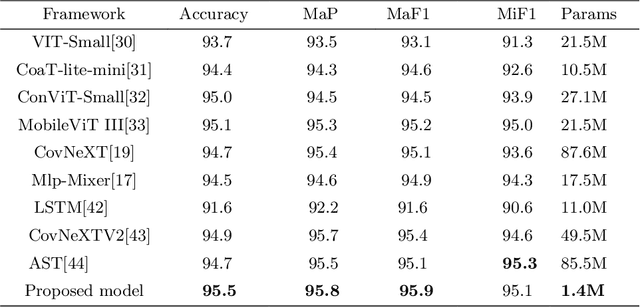
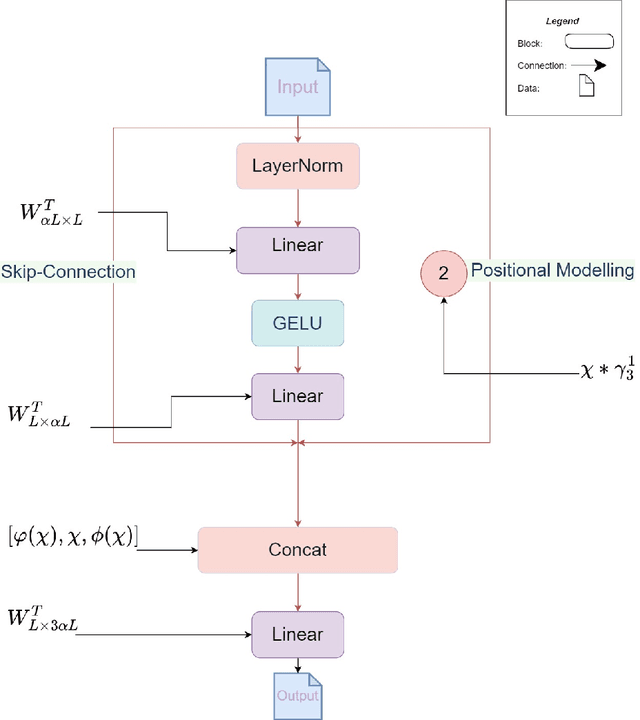

Abstract:Recently, massive architectures based on Convolutional Neural Network (CNN) and self-attention mechanisms have become necessary for audio classification. While these techniques are state-of-the-art, these works' effectiveness can only be guaranteed with huge computational costs and parameters, large amounts of data augmentation, transfer from large datasets and some other tricks. By utilizing the lightweight nature of audio, we propose an efficient network structure called Paired Inverse Pyramid Structure (PIP) and a network called Paired Inverse Pyramid Structure MLP Network (PIPMN). The PIPMN reaches 96\% of Environmental Sound Classification (ESC) accuracy on the UrbanSound8K dataset and 93.2\% of Music Genre Classification (MGC) on the GTAZN dataset, with only 1 million parameters. Both of the results are achieved without data augmentation or model transfer. Public code is available at: https://github.com/JNAIC/PIPMN
Modeling Loosely Annotated Images with Imagined Annotations
May 29, 2008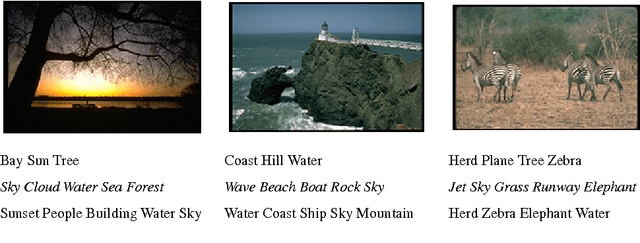

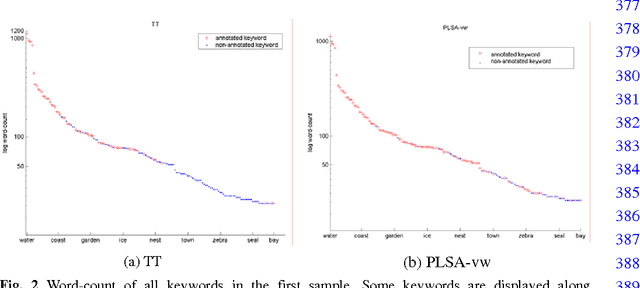
Abstract:In this paper, we present an approach to learning latent semantic analysis models from loosely annotated images for automatic image annotation and indexing. The given annotation in training images is loose due to: (1) ambiguous correspondences between visual features and annotated keywords; (2) incomplete lists of annotated keywords. The second reason motivates us to enrich the incomplete annotation in a simple way before learning topic models. In particular, some imagined keywords are poured into the incomplete annotation through measuring similarity between keywords. Then, both given and imagined annotations are used to learning probabilistic topic models for automatically annotating new images. We conduct experiments on a typical Corel dataset of images and loose annotations, and compare the proposed method with state-of-the-art discrete annotation methods (using a set of discrete blobs to represent an image). The proposed method improves word-driven probability Latent Semantic Analysis (PLSA-words) up to a comparable performance with the best discrete annotation method, while a merit of PLSA-words is still kept, i.e., a wider semantic range.
 Add to Chrome
Add to Chrome Add to Firefox
Add to Firefox Add to Edge
Add to Edge